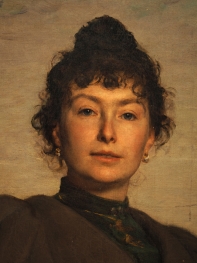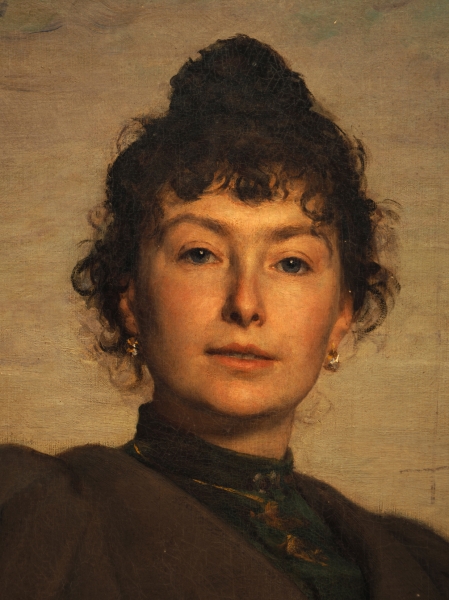Veloso Salgado’s portraits of Adrien Demont and Virginie Demont-Breton
Presentation as part of the guided tour by Maria de Aires Silveira on October 11 at 6:30 p.m.
The close relationship between Veloso Salgado and the painters Adrien Demont and Virginie Demont-Breton represents an exceptional case of artistic collaboration and friendship. Veloso Salgado spent some time at the Demont residence in Wissant, near Calais in the North of France, a town where the couple had settled and which they had transformed into an artistic commune and school of light effects and outdoor painting. Salgado had met Virginie Demont-Breton, wife of Adrien Demont and daughter of landscape artist Jules Breton (1827-1906), in 1888 during his time in Paris on a state scholarship. According to Virginie's memoirs, there he received commissions and won everyone over with his charm.
In 1891, he painted a portrait of Adrien Demont (1851-1928), a landscape artist with a special talent for twilight scenes. The portrait is notable for the power of the image, infused with the artists’ mutual friendship and admiration. A natural pose and attention to details such as the artist's smock and the paintbrushes resting on the table intensify the seductive, meditative aura of the painter-poet, whose interest in the representation of light and colour are also present in some of Veloso Salgado’s paintings, such as Noir et Rose, from 1892, and symbolist paintings from the 1890s.
The portrait of Virginie Demont-Breton (1859-1935) from 1894 reveals a combative figure, with her palette and paintbrushes held high like the weapons of a hunter-goddess. The portrait captures Demont-Breton's strong personality, an artist whose own paintings portrayed everyday scenes of fishermen and their families and the wild North Sea, a drive also evident in her establishment of the Union of Women Painters and Sculptors and of a school open to women artists. Her paintings inspired Veloso Salgado’s A flor do mar [Flower of the Sea], from 1892, both in its theme and colour palette.
These artist portraits stand out as much for their powerful sensibility and technical qualities as for their striking originality. Their expressiveness and tone reveal an acute psychological insight into the subjects and the friendship they shared, emphasising their artistic profiles as a visual display of their social and intellectual prestige. A significant correspondence of both a personal and professional nature was conducted between Lisbon and France from 1896, recently completed with the addition of Veloso Salgado’s letters to the Demonts. The discovery of these portraits and the artist’s involvement at Wissant are fundamental to this innovative reflection on the works of Veloso Salgado and his artistic career.
M.A.S.











